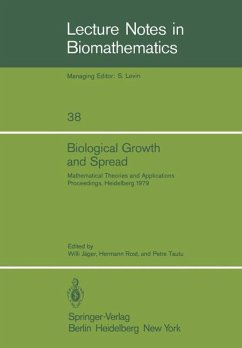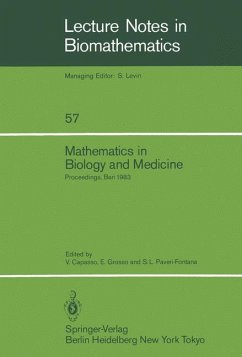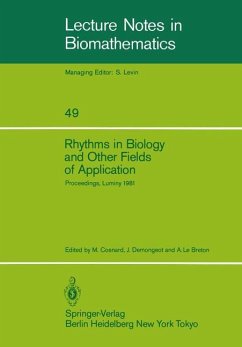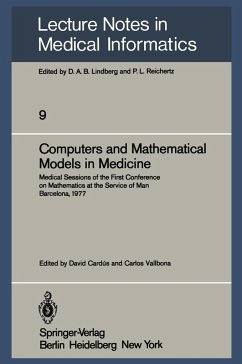
Compartmental Modeling and Tracer Kinetics

PAYBACK Punkte
20 °P sammeln!
This monograph is concerned with mathematical aspects of compartmental an alysis. In particular, linear models are closely analyzed since they are fully justifiable as an investigative tool in tracer experiments. The objective of the monograph is to bring the reader up to date on some of the current mathematical prob lems of interest in compartmental analysis. This is accomplished by reviewing mathematical developments in the literature, especially over the last 10-15 years, and by presenting some new thoughts and directions for future mathematical research. These notes started as a series of ...
This monograph is concerned with mathematical aspects of compartmental an alysis. In particular, linear models are closely analyzed since they are fully justifiable as an investigative tool in tracer experiments. The objective of the monograph is to bring the reader up to date on some of the current mathematical prob lems of interest in compartmental analysis. This is accomplished by reviewing mathematical developments in the literature, especially over the last 10-15 years, and by presenting some new thoughts and directions for future mathematical research. These notes started as a series of lectures that I gave while visiting with the Division of Applied ~1athematics, Brown University, 1979, and have developed in to this collection of articles aimed at the reader with a beginning graduate level background in mathematics. The text can be used as a self-paced reading course. With this in mind, exercises have been appropriately placed throughout the notes. As an aid in reading thematerial, the e~d of a proof is indicated by ~. Sub section titles are utilized to make it easier for the reader to skim over detailed material on a first reading and make the entire manuscript somewhat more accessible, especially to nonmathematicians in the biosciences. The preparation of this monograph has been a long task that would not have been completed without the influence of a number of individuals. I am especially indebted to H. T. Banks, J. W. Drane, J. Eisenfe1d, J. A. Jacquez, D. J.














